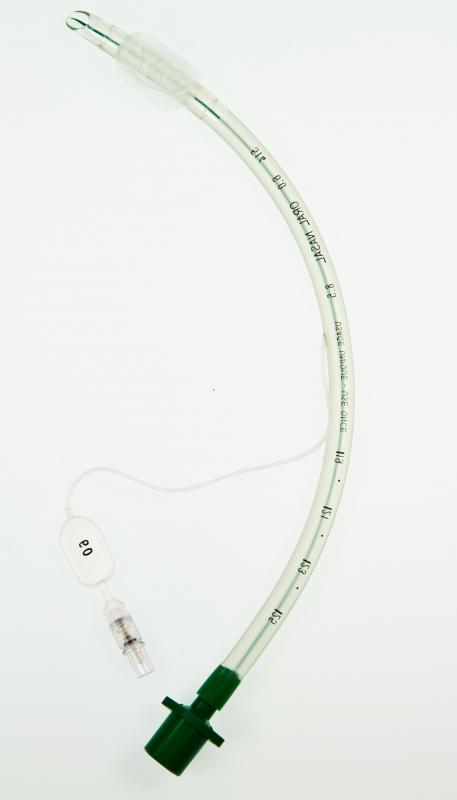At WiseGEEK, we're committed to delivering accurate, trustworthy information. Our expert-authored content is rigorously fact-checked and sourced from credible authorities. Discover how we uphold the highest standards in providing you with reliable knowledge.
What are the Different Methods of Neonatal Mechanical Ventilation?
There are four main types of neonatal mechanical ventilation. Three of them — traditional ventilation, high-frequency oscillatory ventilation, and high-frequency jet ventilation — are the most commonly used. The fourth type, continuous positive airway pressure (CPAP), is the least invasive way to ventilate a newborn but is not as popular as it was before oscillatory and jet ventilation came along.
Traditional neonatal mechanical ventilation requires the newborn to have an endotracheal tube placed into the airway. Tubing is attached from that airway to the ventilator. The physician orders the amount of pressure, oxygen, and rate of respiration he wants the neonate to have provided by the mechanical ventilation.

Oscillatory neonatal mechanical ventilation can be set for very high ventilation frequencies ranging from 210 to 900 breaths per minute. This type of ventilation allows the pressure inside the lungs to be more constant with inhalation and exhalation. It uses a set of tubing to an endotracheal tube like traditional ventilation, but it is more effective for very young neonates who cannot maintain adequate oxygen levels on traditional ventilators.

Jet neonatal mechanical ventilation is similar to the oscillatory form in that it also gives a higher frequency of respirations through the same type of tubing. The difference is that it controls oxygen delivery to the neonate with a bar or ball inside the machine. This allows small, brief pulses of air to enter the lungs as opposed to a more constant flow of air.

Traditional neonatal mechanical ventilation has relatively limited use. Its typical patient is a healthy newborn who may need a very short time on a ventilator and has fairly normal lung tissue. This type of ventilation is used for only a few hours to a few days; it is not for neonates who need long-term ventilation.
Oscillatory and jet neonatal mechanical ventilation may also be used for a just few days. They will, however, be used on neonates who may have immature lungs or a lung disease related to premature birth. The frequency of these types of ventilators prevents long-term damage to the immature tissue and prevents long-term side effects of mechanical ventilation.

CPAP is an external way to give a neonate continuous positive airway pressure without placing an endotracheal tube into the airway. CPAP uses a mask fitted over the neonate’s nose or a set of prongs placed into the nasal passages. Tubing is also attached to a machine and humidifier. The machine then ensures that an ordered amount of pressure is delivered into the lungs with each spontaneous infant breath.

Mechanical neonatal ventilation can be delivered for a short amount of time or for several days to weeks, if necessary. The type of neonatal mechanical ventilation a physician chooses depends on the age and size of the newborn. It also depends on the condition of the neonatal lung tissue, and the overall goal for treatment with a neonatal mechanical ventilator.
AS FEATURED ON:
AS FEATURED ON:
















Discuss this Article
Post your comments